Jazz Off the Record
In the late 1960s, the recording industry lost interest in America’s greatest art form. But in a small, dark club on the Lower East Side of Manhattan, jazz legends were playing the best music you’ve never heard.
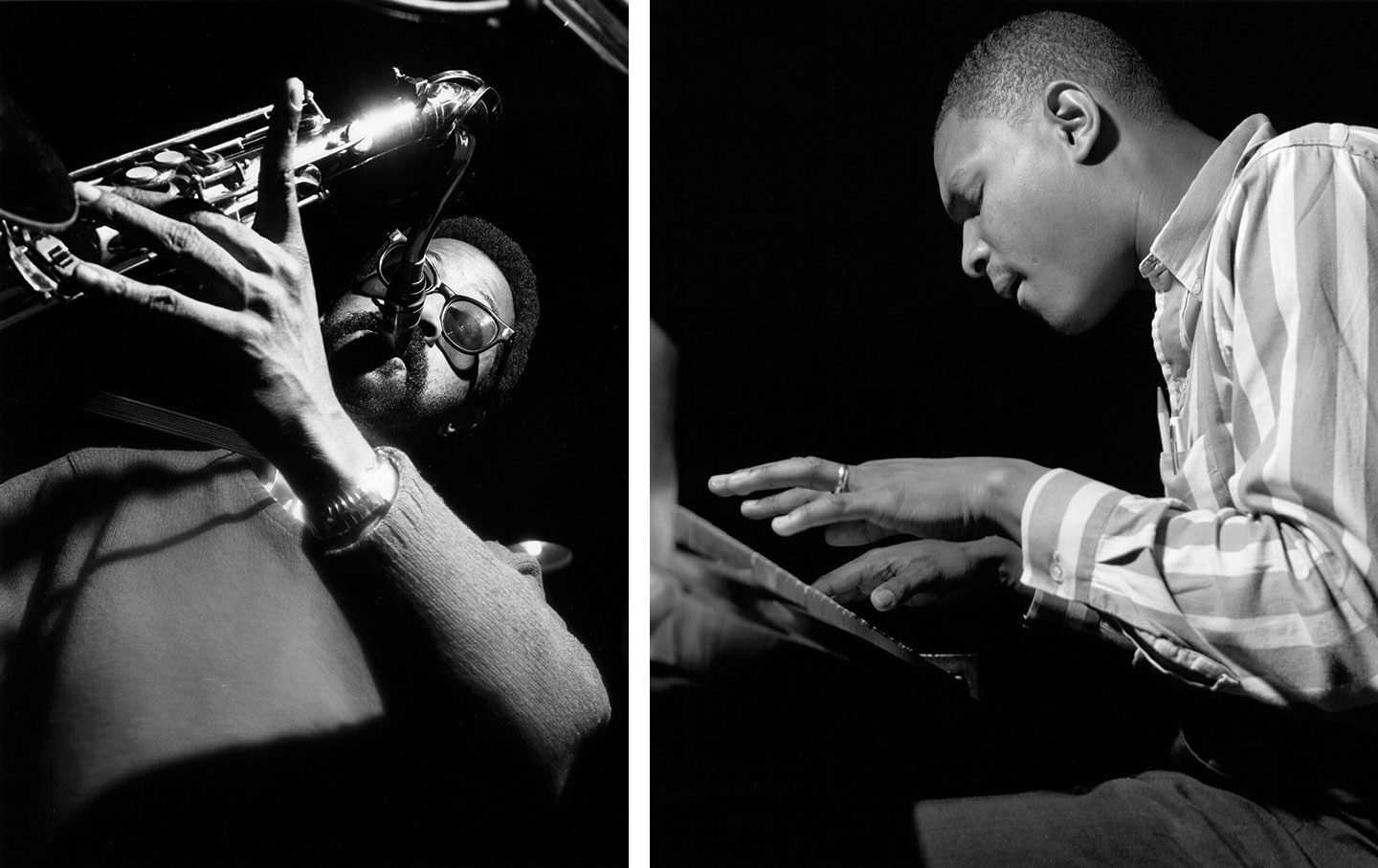
Tenor saxophonist Joe Henderson and pianist McCoy Tyner.
(Francis Wolff / Blue Note)
Sometime in the late 1960s or early ’70s, Lee Morgan bought his girlfriend Helen Moore a gun. “It’s for your protection,” he told her. Perhaps it was a thank-you gift, because Moore had turned the great jazz trumpeter’s life around. Despite being one of American music’s brightest lights in the 1960s—and scoring one of its biggest instrumental hits, “The Sidewinder”—Morgan had fallen deep into the despair of heroin addiction, to the point of being considered unreliable and unhireable by just about everyone. Moore picked him up, got him straight, and started managing his career. Then, in February 1972, in a plot twist worthy of an old blues ballad like “Frankie and Johnny,” Moore put a bullet into Morgan’s chest from the very gun he’d bought her. The murder took place at Slugs’, a disreputable joint on the Lower East Side of Manhattan. Slugs’ closed soon after, and the jazz scene seemed to change forever.
There remains something mysterious about the years leading up to this tragic event. The work of musicians like Morgan, who was still playing swinging music in mostly acoustic ensembles, had begun to decline in popularity after 1964, when “The Sidewinder” could be found on every jukebox, and labels were taking less interest in putting it on record. John Coltrane’s death in July 1967 had seemed to mark the end of an era. Coltrane was the lodestar of a generation, a virtuosic saxophonist and visionary composer who channeled devout spirituality and fierce intellectual exploration in every note he played. Between the death of Coltrane and the death of Morgan, there is a dearth of great material in the recorded canon. However, at least according to legend, the music was better than ever, and a lot of it was happening at Slugs’.
That makes Blue Note’s recent release of Forces of Nature: Live at Slugs’—a 1966 recording featuring the pianist McCoy Tyner, who long held the piano chair in the John Coltrane Quartet, the saxophonist Joe Henderson, and the bassist Henry Grimes—a major event. The drummer in that all-star band was the great Jack DeJohnette, who is now its only surviving member, and he’s the one who held onto the tape all those years. The engineer Orville O’Brien had casually recorded that night’s session, and the drummer was curious to hear how it sounded. “I had asked Orville if he could give me a seven-and-a-half i.p.s. copy of that show and he did,” DeJohnette remembers in the liner notes. “Thanks to that seven-and-a-half reel-to-reel, we have the gift of this music.”
“Slugs’ was a lowbrow joint, but it was also part of the youth movement,” the drummer Billy Hart told me. “Broadway people and fashion models mingled with college students and true jazz fans. There was sawdust on the floor, a big hole in the stage, and the club owners and the musicians who played there all chased the same models—or waitresses—and smoked the same pot.” What that assortment of listeners heard at Slugs’ was a community music, played by members of a close-knit New York circle who studied their craft together in the afternoon before playing at the club at night. But most of these musicians were originally from other cities. Among the musicians on Forces of Nature, Henderson is from Detroit, Tyner and Grimes are from Philadelphia, and DeJohnette is from Chicago. Each hometown boasted its own teachers and mentors, and just as important was the audience, made up of residents of working-class Black neighborhoods proud of their city’s young talent.
In the liner notes to Forces of Nature, Joshua Redman, an acclaimed tenor saxophonist who emerged in the 1990s, unequivocally places Henderson in the jazz pantheon alongside Coltrane and Sonny Rollins. Henderson is not as well-known as those giants, but his influence is monumental. He commanded the whole spectrum of jazz, from bebop to the avant-garde, while still sounding like nobody else. His early compositions, like the now-standard pieces “Recorda Me” and “Inner Urge,” were essential in shaping the style of jazz that emerged during this era by pioneering new approaches to rhythm and harmony.
Those innovations were organic. Little of this music was made by musicians who learned about jazz at college. They learned about it from the streets, from the barbershop, from the high school dance. It was still a proudly Black music: Indeed, a growing political consciousness was an important factor in the sound of the era and can be traced in a series of album titles that sound progressively more militant. (Henderson started with Page One in 1963 and by 1971 was releasing In Pursuit of Blackness.) Still, Black musicians didn’t object to the participation of white musicians, like Chick Corea and Joe Farrell, if they had something special to offer.
Perhaps because of its lower visibility in the historical record, this style of 20th-century music has never really been given a name. “Modal jazz,” which means working with a scale or sequence of scales as opposed to conventional cycles of chords, is a contender, although there’s a lot more going on than that. The historical literature sometimes refers to “post-bop,” simply denoting the period after bebop and hard bop, but that’s almost pointlessly generic. Names are difficult: Many major practitioners don’t even like the words jazz and bebop. Tyner, the greatest modal pianist of all time, told Marian McPartland in a 1983 interview that he didn’t like the word modal.
Whatever you call it, something was happening. Those fortunate enough to have been at Slugs’ still speak of it as hallowed ground. One such listener was the trumpeter and composer Steve Lampert, who was just a kid when he started going there in 1967. “It was absolutely explosive,” he says of a band he saw there led by Tyner. “Waves of energy—it raised you out of your chair and did something healing to your heart.”
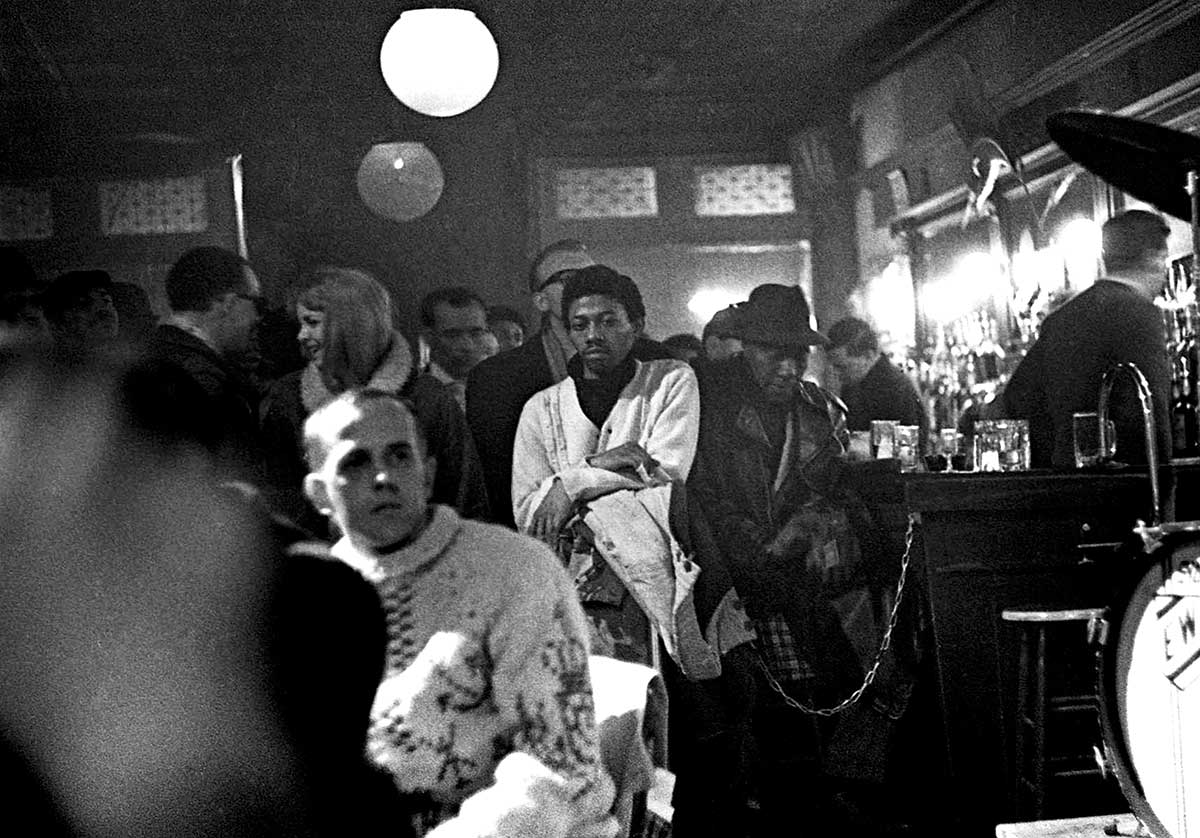
Robert Schoenholt and Jerry Schultz opened the doors at 242 East Third Street in 1964, calling their new venue Slugs’ Saloon. The owners were devotees of the Greek Armenian philosopher and mystic George Gurdjieff; in Gurdjieff’s first major book, Beelzebub’s Tales to His Grandson, the extraterrestrial Beelzebub refers to the inhabitants of Earth as “three-brained beings,” also known as “slugs.” The name was later changed to Slugs’ in the Far East in reference to its neighborhood, because of a city ordinance prohibiting the word saloon. Just a few months after the ribbon was cut, the alto saxophonist Jackie McLean brought in a band. All of a sudden, the room was a jazz club, and McLean’s pianist, LaMont Johnson, helped with the bookings.
At the time of the club’s opening, the best-known leaders of modern jazz were Coltrane and Miles Davis. Within a few years, the two took on even more historical significance when they embraced the new sounds emanating from younger scenes, currents that have respectively come to be known as “fusion” and “free jazz.” The story of fusion can be told in the evolution of Davis’s music, after he had started listening to Motown and funk on the radio. He added electric keyboards and groovy bass lines to his recordings in 1968, on the way to releasing the bestselling albums In a Silent Way and Bitches Brew. The story of free jazz is epitomized by the development of Coltrane, who studied the emerging avant-garde movement of the saxophonists Ornette Coleman and Albert Ayler and the pianist Cecil Taylor before producing increasingly abstract works like Ascension, Meditations, and Interstellar Space.
The idioms of free jazz and fusion are perpetually controversial. The Ken Burns PBS documentary Jazz, which codified a certain narrative of jazz history in the public imagination, did what it could to ignore both. The story Burns tells suggests that jazz was in hibernation between the death of Coltrane and the eventual emergence of new traditionalists like Wynton Marsalis. The music played at Slugs’ and clubs like it goes all but unmentioned.
That music was made by the sidemen of Davis and Coltrane and their immediate disciples, using the materials discarded by free jazz and fusion. Jackie McLean started the music policy at Slugs’, and his discography, much of it on Blue Note, tracks the changes of style. In the 1950s, McLean was influenced by Charlie Parker and Bud Powell, threading traditional bebop lines on his alto saxophone and recording standards in a deeply swinging style. In the ’60s, influenced by Coltrane and Tyner, McLean started incorporating wide leaps generated from modal scales while premiering experimental compositions on albums with titles that proclaimed Let Freedom Ring and Destination… Out! McLean was always listening to the young musicians, and newcomers like Tony Williams, Grachan Moncur III, Charles Tolliver, Larry Willis, DeJohnette, and others made their debuts or near-debuts on McLean’s Blue Note albums.
These musicians understood both the bebop of Parker and the blues and gospel message of hard bop musicians like Horace Silver. The modal innovations of Coltrane and Tyner were a given, and the style even allowed in a taste of free jazz. Without being conservative in the slightest, their sensibility was also decidedly true to basic values, existing solely for the goddess of music herself. Its continuity with the tradition is embodied in its incredible rhythmic feel, a feel that stretches back to the earliest days in New Orleans, through the big band craze of the 1940s, to the great modernist drummers Elvin Jones and Tony Williams. A dancing beat; flexible, irresistible.
In other words: swing.
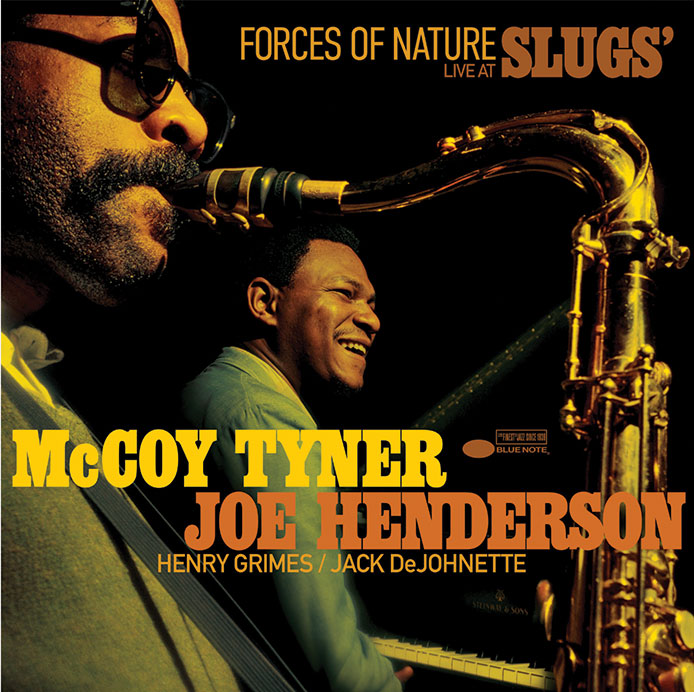
The swing feel is aligned with the lope of a basic shuffle, a push-and-pull that’s ideal for dancing. It was discovered in New Orleans around the turn of the century, and Kansas City took it to the next level in the 1930s: The bandleader Count Basie, the saxophonist Lester Young, and the drummer Jo Jones were now “Swinging the Blues,” as their seminal 1938 hit announced. A few years later, the bebop wave of Parker, Dizzy Gillespie, and Max Roach played all the New Orleans and Kansas City ideas twice as fast, making jazz a virtuosic and abstract art music.
Still, the relationship between jazz and popular dance remained close. During the late ’40s, the mambo from Cuba hit the American dance floor, and bebop and hard bop absorbed Caribbean phrasing and polyrhythm, the superimposition of one meter against another. At the start of the ’60s, bossa nova was inching its way up the pop charts, and jazz musicians quickly began incorporating this new Brazilian syncopation.
The bebop line of art music continued in the early ’60s with experimental and conceptual rhythm from the avant-gardists. Sunny Murray usually gets the credit for establishing the drum style while playing with Albert Ayler; John Coltrane called this free rhythm “multidirectional.” The great jazz drummers of the late ’60s—Elvin Jones, Tony Williams, Roy Haynes, Freddie Waits, Billy Higgins, and Joe Chambers—could command all that evolution while still steadfastly swinging. This ’60s swing contained multitudes, including New Orleans swagger, Kansas City sleek, bebop speed, Afro-Cuban polyrhythm, Brazilian sway, and the latest avant-garde concepts. Young Jack DeJohnette shows exactly how this mix exists as a unified idiom on Forces of Nature.
The other main ingredient is harmony, for which there’s no other choice but to begin at the piano, where chords and melodies fit into the major-minor tonal system of European music. Africans brought to America took that fine old system at face value but quickly added syncopation (rhythmic displacements that put the melody and harmony out of alignment), riffs (repeated melodies that ignored changing harmony), and the blues (in-between pitches that can’t be played on the piano). Despite these innovations, the cycle of tension and release that characterizes music from Bach and Chopin to John Philip Sousa and Tin Pan Alley remained foundational until the late ’50s.
In 1959, Miles Davis’s Kind of Blue, with its stunning contributions from Coltrane, opened the gates to the modal sound. Davis’s search for a framework outside the European tonal system drew ideas from the theorist and composer George Russell, who had laid out his own system in a 1953 tome with the catchy title The Lydian Chromatic Concept of Tonal Organization. Kind of Blue was a cool and lyrical modal jazz, with the poetic pianist Bill Evans essentially coauthoring the date, but Coltrane later took that approach in a spiritual and African direction, with the help of Tyner. Coltrane records like Live at Birdland, Crescent, and A Love Supreme represent the apotheosis of this sound.
More than Davis and perhaps even more than Coltrane, Tyner is the true architect of what followed. His signature harmonic device, the fourth chord, was disseminated on Coltrane’s hit recording of “My Favorite Things” in 1961 and widely adopted overnight. Lacking the note that would make a chord either major or minor, fourth chords have a mysterious stasis, refusing to commit to the system of tonality that defined European art music. The effect was both ancient and contemporary: a circle of stones, lit by fire, right next to a jet plane.
Free jazz had already defied convention in a different way, going back to Ornette Coleman’s breakthrough The Shape of Jazz to Come, also from 1959. In free jazz, as practiced by Coleman, Taylor, and Ayler—all of whom played Slugs’ as well—conventional tonality was replaced with varying degrees of dissonance. (Coleman sang wrong-note folksong, Taylor supplied a wall of atonality, and Ayler’s extended techniques could erase pitch altogether.) But modal and atonal sensibilities coexisted almost from the beginning. In 1961, when Coltrane began touring as a leader, the second horn was Eric Dolphy, who offered endless angularity in the most outré free jazz manner. Their successors carried this dialectic into synthesis. On any given night at Slugs’, you might have heard the pianist playing a spiritual modal chord, the horns wailing in fierce atonal dissonance, and the swinging drums making them become one.
Popular
“swipe left below to view more authors”Swipe →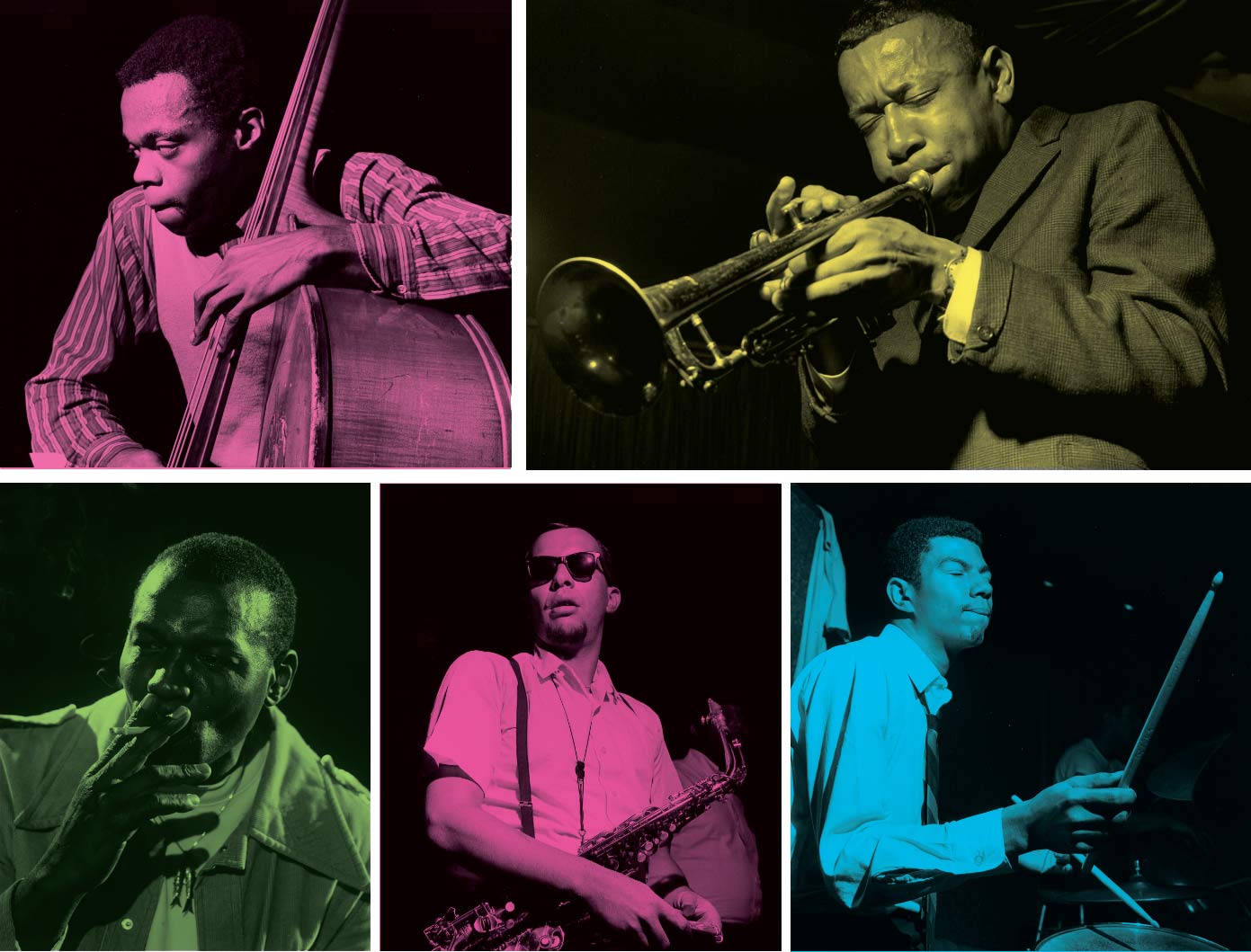
In 1939, Alfred Lion, a German Jewish immigrant, and Max Margulis, an American writer, founded the Blue Note label with the aim of documenting their favorite music. (Full disclosure: I’ve been a Blue Note artist since 2022, though I’ve been a collector of Blue Note albums for a lot longer than that.) Soon after, Lion’s childhood friend Francis Wolff came aboard, and in time the art direction was overseen by Reid Miles, often using the now-iconic black-and-white photographs taken by Wolff. When Rudy Van Gelder became the label’s house engineer for the LP era, Blue Note was well on its way to becoming legendary. Both Davis and Coltrane recorded one-offs for Blue Note in the 1950s, but the label’s most celebrated run consisted of its LPs from that decade documenting hard bop, which could be heard on jukeboxes in Black communities, followed by its series of ’60s albums showcasing the new omnivorous post-modal style that was booked into Slugs’. “Blue Note LPs are like film noir,” the late saxophonist David Sanborn once told me—a worthy comparison, for both are mid-century collections of genre with a notably distinctive and evocative style. Film noir and Blue Note albums weren’t cheap to make, exactly, but they weren’t expensive, either. Both were produced in significant numbers, and their relative merits are now hotly debated by dedicated collectors. (If you discover and enjoy one film noir or Blue Note LP, don’t worry: There’s plenty left to explore.)
It’s hard to remember, but there was actual money in jazz in those days. When Coltrane signed with the record label Impulse! in 1961, he received a $10,000 advance, which is not a bad figure for a jazz record contract today, let alone adjusted for inflation ($105,000). Davis was making even more money recording for Columbia. Both Davis and Coltrane had management, booking agents, and publicists. The sidemen were usually on salary at something like $175 a week ($1,900 in today’s dollars), which they got paid whether the band had a gig that week or not. Depending on how you count it, Davis released about 25 Columbia albums between 1957 and 1968, and Coltrane released about 14 Impulse! albums between 1961 and 1967. Many of their peers were even more prolific: The drummers Max Roach and Art Blakey put out more than 20 albums each as leaders between 1955 and 1965; both were also constantly in the studio as sidemen. The great Paul Chambers, whose bass guides Davis, Coltrane, and Evans through the landscape of Kind of Blue, is on more than 200 LPs—almost all of them wonderful—recorded between 1955 and 1968. (Coltrane named a tune for Chambers, “Mr. P.C.,” first recorded on Giant Steps.)
The new music heard at Slugs’ and other small venues in New York was documented mostly by Blue Note. In 1964, the year Slugs’ opened, these sounds were already abundant. Much of it was powered by Elvin Jones, the drummer in Coltrane’s quartet with Tyner and the bassist Jimmy Garrison. Coltrane’s Crescent and A Love Supreme (released by Impulse!), as well as Henderson’s In ‘n Out and Inner Urge and Wayne Shorter’s Night Dreamer, JuJu, and Speak No Evil (released by Blue Note), were all tracked in 1964 at Van Gelder’s studio in Englewood Cliffs, New Jersey, with Jones on drums. His playing that year alone is in its own category of human achievement. Jones went on to fuel subsequent masterpieces of the style in the years to come, including Tyner’s The Real McCoy and Larry Young’s Unity.
Sadly, the writing was on the wall for the industry. Alfred Lion left Blue Note in 1967, and the Summer of Love proved that there was fame and fortune to be found in rock and R&B. Jazz was suddenly old news, and many gatekeepers abruptly quit hiring. The deaths of bebop great Bud Powell in 1966, at 41, and Coltrane the following year, at 40, felt ominous. But the music didn’t stop. The music was still there, at least for a time, and this is partly why the name Slugs’ is such an evocative one for the cognoscenti. Despite flagging interest and the pressures to achieve crossover appeal, jazz still lived at Slugs’, where Tyner, Morgan, Jones, Art Blakey, the trumpeter Freddie Hubbard, and many others kept the flame burning.
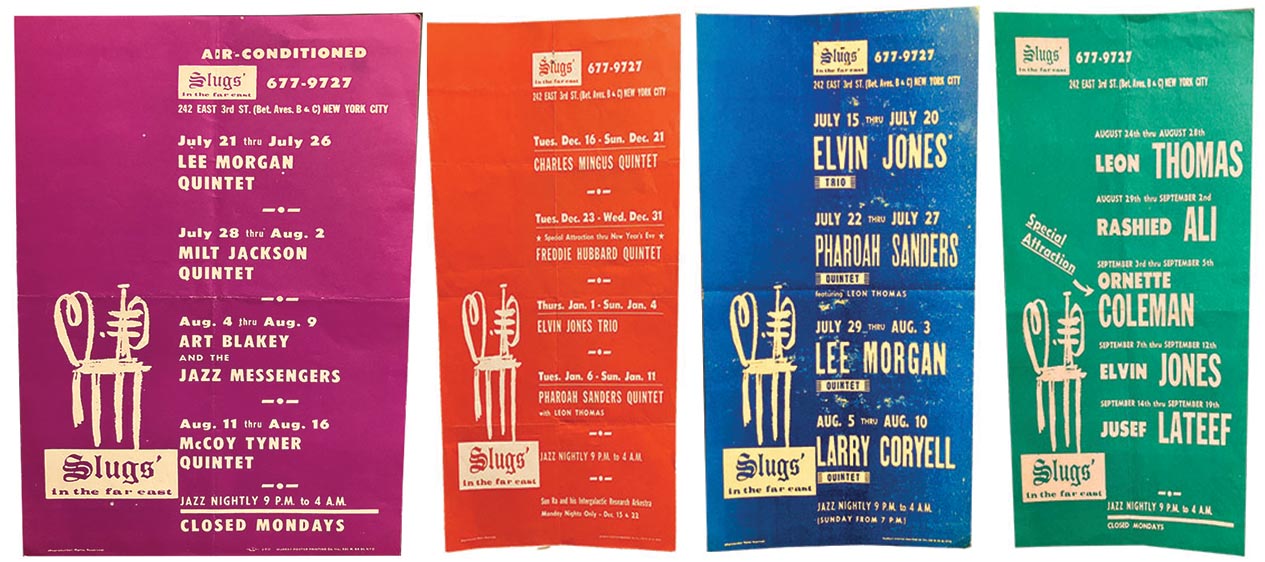
With those market pressures in place, however, even when this music was recorded, it sometimes didn’t make its way to listeners. Freddie Hubbard is fairly well represented on record, but the young comer Woody Shaw, one of the greatest practitioners of the new idiom, was less fortunate. His first album as a leader, In the Beginning, was recorded for Blue Note in 1965 but became a casualty of the company’s sale to Liberty Records; it didn’t see the light of day until more than 15 years later. The Elvin Jones Trio, with the saxophonist George Coleman, was taking the Village Vanguard apart in 1968, and someone was rolling tape, but for decades you could find all the tracks only on the deeply obscure budget bootleg label Honey Dew. The trumpeter Charles Tolliver’s brilliant all-star debut, Paper Man, was recorded that same year but remained unreleased until 1975—an experience that may have motivated Tolliver to join forces with the pianist Stanley Cowell in 1971 to form Strata-East, one of the first Black-owned jazz labels.
Blessedly, some sessions did make it through the cracks. Corea’s well-produced Now He Sings, Now He Sobs came out shortly after it was recorded in 1968 on Solid State, and it remains the definitive piano trio statement of the moment. But in a faux pas of the highest order, the brilliant sidemen, the bassist Miroslav Vitouš and the drummer Roy Haynes, were not listed on the jacket. Haynes died in November 2024 at the age of 99, having outlived just about all of his peers. The great drummer was a literal link to the glory days of swing and bebop, so it might have seemed surprising when the youthful firebrand Corea hired the elder Haynes for Now He Sings, Now He Sobs. But Corea and Haynes had been working out their shared language during repeat engagements at Slugs’. The pianist George Cables told me about a two-week run that Haynes headlined at the club—one in which Corea, Henderson, and Tyner also appeared, in different lineups. “There was so much stuff happening that I had to leave,” Cables said. “It wasn’t that I didn’t want it—I just couldn’t handle it, I couldn’t digest anymore, I had to go!”
Like Jackie McLean, Lee Morgan had adapted to the latest innovations while recording his many canonical albums for Blue Note. Morgan never took it quite as far out as McLean did, but he became one of the masters of the idiom. His 1971 double LP Live at the Lighthouse, though recorded on the opposite coast in Hermosa Beach, California, sounds like a good approximation of the kind of thing that was happening at Slugs’ every night, down to its epic scale: The original issue had one song per side, each lasting 16 to 20 minutes. To be fair, that characteristic makes a case for the basic unsuitability of the music for the record industry: A string of long jazz solos may thrill those assembled before them, but forget getting played on the radio.
Steve Lampert returned to Slugs’ to see Morgan again and again—and the music’s elder statesmen were paying attention too. “‘There’s a man sitting at the bar who plays the same instrument I do but plays it much better,’” Lampert remembers Morgan saying one night when Miles Davis joined the crowd. At another New York club, the Village Gate, Lampert saw Morgan five days before he was killed at Slugs’. “He was playing like the angel Gabriel,” Lampert says. As with Coltrane and Parker before him, Morgan’s early death, at just 33, leaves the tantalizing question of what he might have done next.
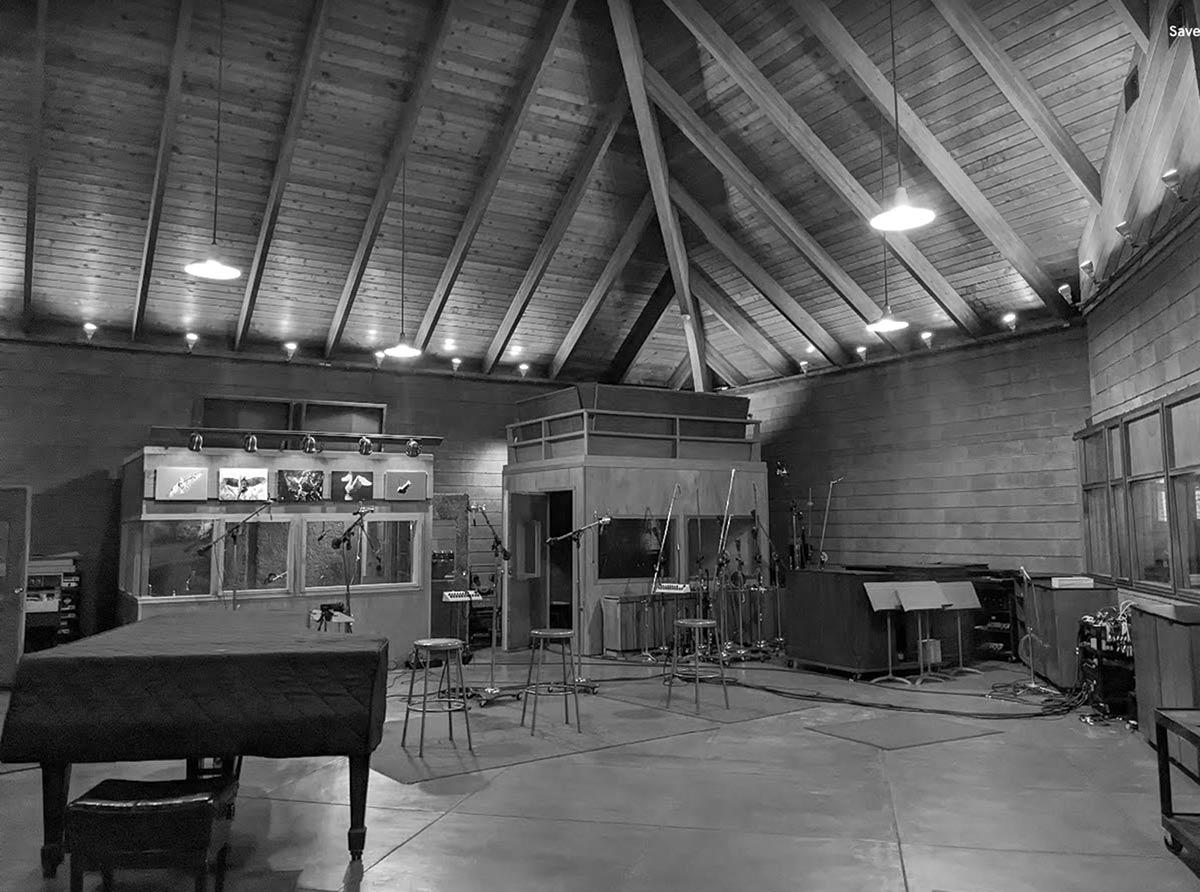
Forces of Nature is not a perfect record. Newcomers should bypass it, for now, and head straight to The Real McCoy instead. But the band on Forces of Nature wasn’t trying to make a record that night; the musicians were playing for themselves, and what sounds like about 25 quiet listeners in the audience. In some ways, it’s a representation of the messiness of an unruly new style. During the minor blues “Taking Off,” the musicians get out of sync with each other, lining up at different places in the form. That’s no big deal—it could happen to anybody—but the dispute isn’t resolved for minutes on end. And while Tyner’s piano solos are naturally extraordinary, some of his accompaniment is uncomfortably lean and spiky, unlike the lush chords he played for Henderson in the studio. The highlight might be Henderson’s “Isotope,” which takes the blues at a lope, but connoisseurs have got to hear the ferocious “In ‘n Out,” also a Henderson composition, the blues at supersonic speed.
The death of Lee Morgan seemed to finish off a scene, but it was not the only factor: The economic incentive to keep playing tough acoustic jazz in down-and-dirty circumstances had dwindled to almost nothing. Even some of the most advanced proponents of swinging acoustic jazz took the approach of plugging in and adding dance beats. In his memoir Possibilities, Herbie Hancock rationalizes what some called “selling out” with reference to his practice of Nichiren Buddhism; Chick Corea discussed his embrace of Scientology in nearly identical terms. Both Hancock and Corea claimed they were serving a religious higher power by playing more accessible music. (This kind of thing was in the air: The pianist Keith Jarrett had been introduced to George Gurdjieff—the namer of Slugs’—by his employer in the late ’60s, saxophonist Charles Lloyd, a denizen of Slugs’, and eventually recorded a straightforward recital of the guru’s religious piano music.)
Recording technology itself had evolved in a direction more favorable to fusion. Before 1970, the acoustic bass was frequently hard to hear; that changed when electric pick-ups made it possible to plug directly into an amplifier. It took a surprisingly long time for bassists and their engineers to figure out the correct balance between instruments—on many ’70s albums, the aggressive drummers are mixed softer than the bass. This was not a very swinging state of affairs. If you know what to look for, there is still a lot of terrific music to listen to, but there was no Alfred Lion around to help curate the collection. Finding the best straightforwardly swinging stuff requires a lantern and a map.
And perhaps the level of intensity consistently reached at Slugs’ was simply a young man’s game. In 1985, a major event for the revitalized Blue Note label at New York’s Town Hall auditorium included a few tunes from the all-star quintet of McLean, Shaw, Tyner, DeJohnette, and Cecil McBee. This is a Slugs’ band, no doubt, but the music just isn’t quite right.
That isn’t to say that the general idea faded away to nothingness. On the contrary, its traces can be heard all over the globe, on any night of the week. Fusion had its influence on subsequent genres like hip-hop and techno, but in a larger sense it has remained of its time, and its popularity with young musicians has waned. Free jazz, like other challenging avant-garde art forms, has remained a marginal endeavor with no more than a cult following. But ever since the 1970s, the halls of music schools have echoed with sounds that strive to emulate the jazz of the 1960s. When Wynton and Branford Marsalis burst onto the scene, around the time of the 1985 Blue Note Town Hall concert, both brothers led groups that honored a tight continuum: early ’60s Miles Davis, early ’60s John Coltrane, and almost a full decade’s worth of Herbie Hancock, Wayne Shorter, McCoy Tyner, Joe Henderson, Freddie Hubbard, Ron Carter, Elvin Jones, and Tony Williams. Their emergence is too often understood as a revival of something that had come and gone, but it had never really stopped—even if the mass audience temporarily stopped listening. Since its belated breakthrough, the most visible practitioners of contemporary jazz have taken this framework as a given.
Those who insist that jazz is “America’s classical music” have a strong argument: The music of that continuum is just as serious as Bach or Beethoven. But there’s also a counterargument, which is simply that the most serious jazz often happened in a small club smelling of bourbon, perhaps with sawdust on the floor, played on a piano overdue for a tuning, before a group of committed listeners mixing with the unpretentious flow of street life. If Slugs’ had been a proper concert hall for America’s classical music, there would be no legend, no search for the unknown, no war stories for older musicians to tell each other at the bar. Since Slugs’ was a saloon, the tall tale grows taller every day. But as Forces of Nature proves, this one happens to be the truth.
Disobey authoritarians, support The Nation
Over the past year you’ve read Nation writers like Elie Mystal, Kaveh Akbar, John Nichols, Joan Walsh, Bryce Covert, Dave Zirin, Jeet Heer, Michael T. Klare, Katha Pollitt, Amy Littlefield, Gregg Gonsalves, and Sasha Abramsky take on the Trump family’s corruption, set the record straight about Robert F. Kennedy Jr.’s catastrophic Make America Healthy Again movement, survey the fallout and human cost of the DOGE wrecking ball, anticipate the Supreme Court’s dangerous antidemocratic rulings, and amplify successful tactics of resistance on the streets and in Congress.
We publish these stories because when members of our communities are being abducted, household debt is climbing, and AI data centers are causing water and electricity shortages, we have a duty as journalists to do all we can to inform the public.
In 2026, our aim is to do more than ever before—but we need your support to make that happen.
Through December 31, a generous donor will match all donations up to $75,000. That means that your contribution will be doubled, dollar for dollar. If we hit the full match, we’ll be starting 2026 with $150,000 to invest in the stories that impact real people’s lives—the kinds of stories that billionaire-owned, corporate-backed outlets aren’t covering.
With your support, our team will publish major stories that the president and his allies won’t want you to read. We’ll cover the emerging military-tech industrial complex and matters of war, peace, and surveillance, as well as the affordability crisis, hunger, housing, healthcare, the environment, attacks on reproductive rights, and much more. At the same time, we’ll imagine alternatives to Trumpian rule and uplift efforts to create a better world, here and now.
While your gift has twice the impact, I’m asking you to support The Nation with a donation today. You’ll empower the journalists, editors, and fact-checkers best equipped to hold this authoritarian administration to account.
I hope you won’t miss this moment—donate to The Nation today.
Onward,
Katrina vanden Heuvel
Editor and publisher, The Nation
More from The Nation
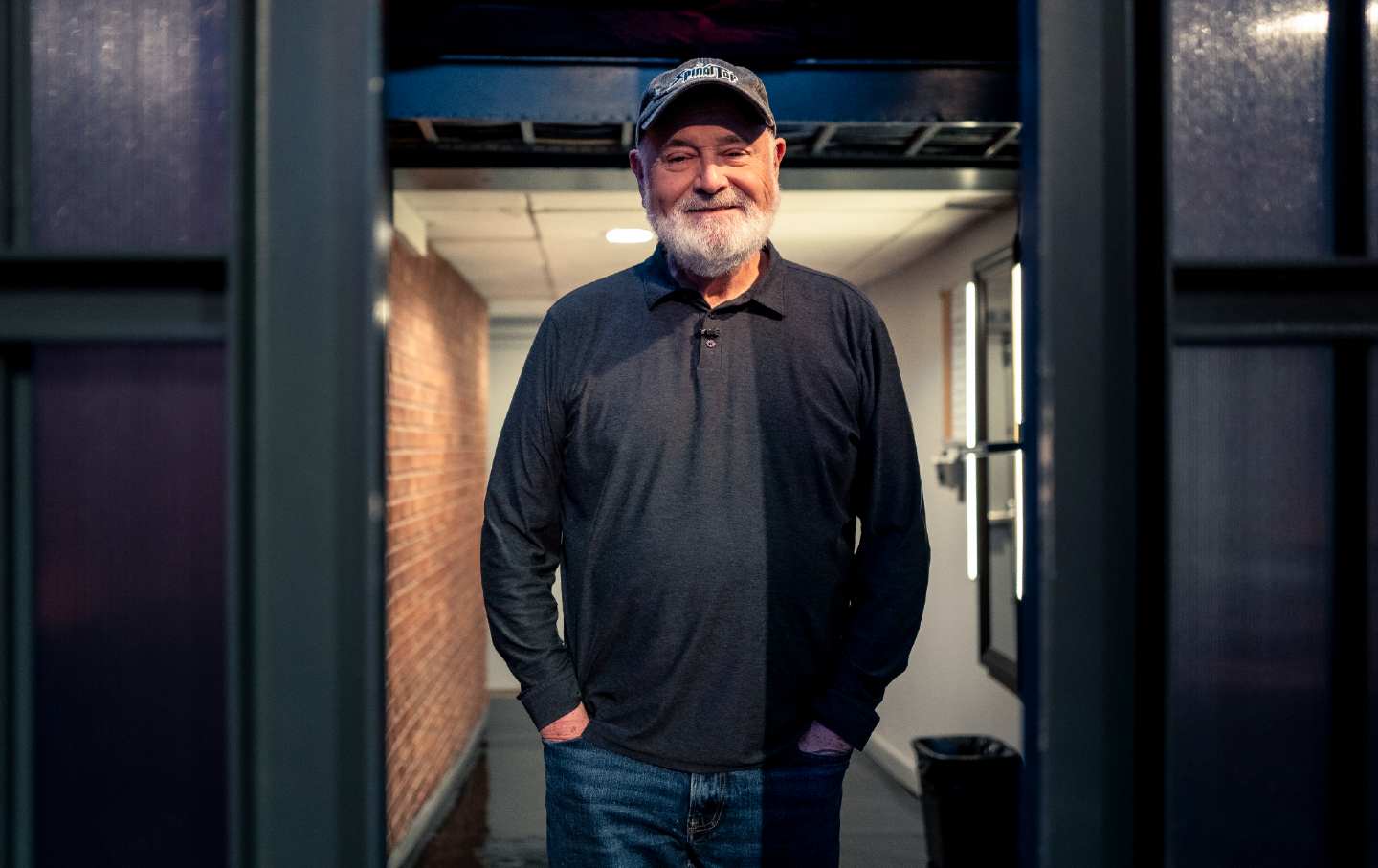
Rob Reiner’s Legacy Can't Be Sullied by Trump’s Shameful Attacks Rob Reiner’s Legacy Can't Be Sullied by Trump’s Shameful Attacks
The late actor and director leaves behind a roster of classic films—and a much safer and juster California.
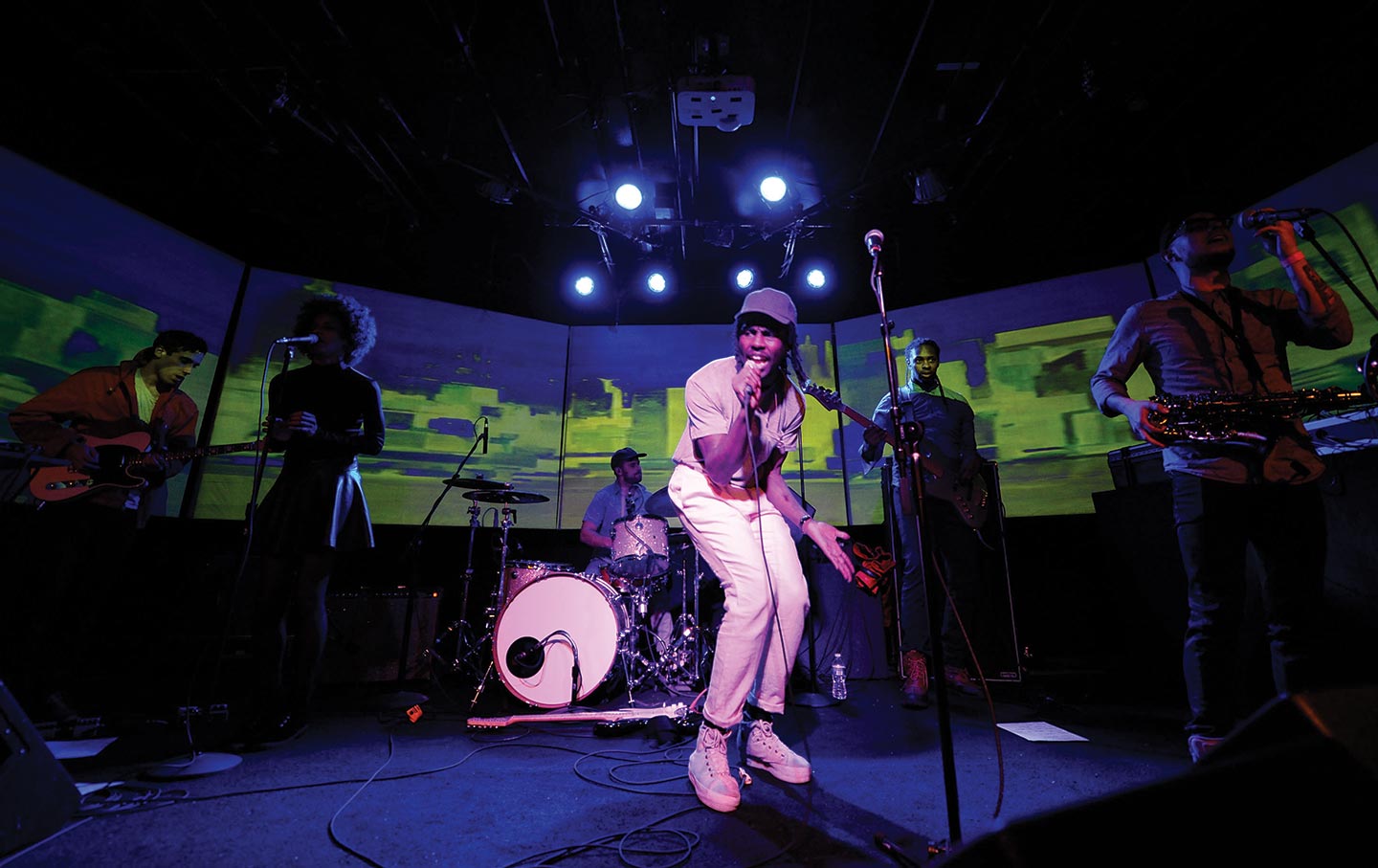
Blood Orange’s Sonic Experiments Blood Orange’s Sonic Experiments
Dev Hynes moves between grief and joy in Essex Honey, his most personal album yet.

Ars Poetica with Backup from The Clark Sisters Ars Poetica with Backup from The Clark Sisters
after “Is My Living in Vain?”, 1980
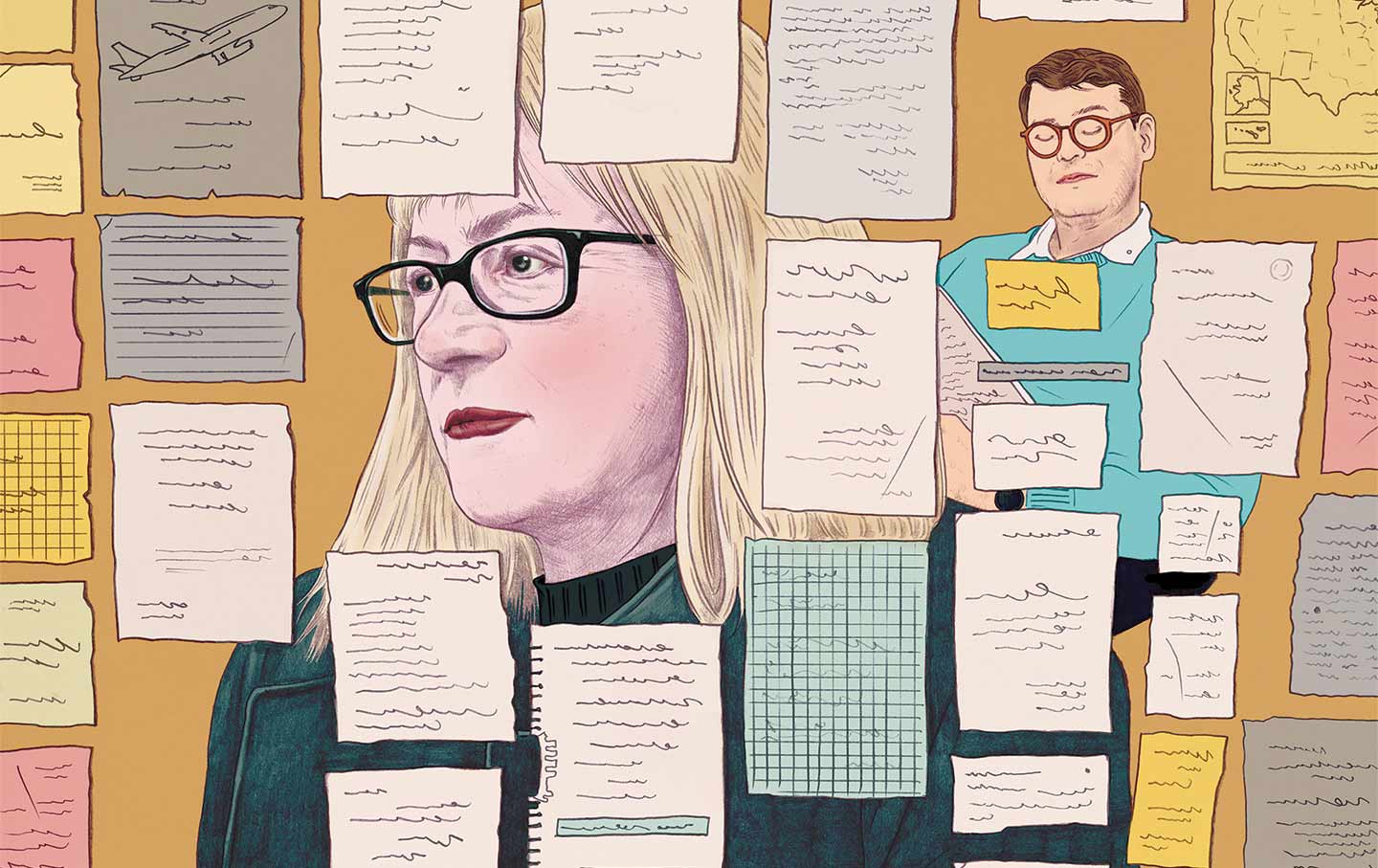
Helen DeWitt and Ilya Gridneff’s Sweeping Anti-War Novel Helen DeWitt and Ilya Gridneff’s Sweeping Anti-War Novel
Your Name Here dramatizes the tensions and possibilities of political art.


